The flag of North Korea, commonly known as the Ramhongsaek Konghwagukgi, is made up of a central red panel that is framed on both the top and bottom by wide blue and narrow white stripes. Due to its link with the country’s oppressive North Korean dictatorship, the flag is outright forbidden under South Korea’s National Security Act.
If you want to learn more about the North Korea flag, then this article will definitely provide you with all the essential information.
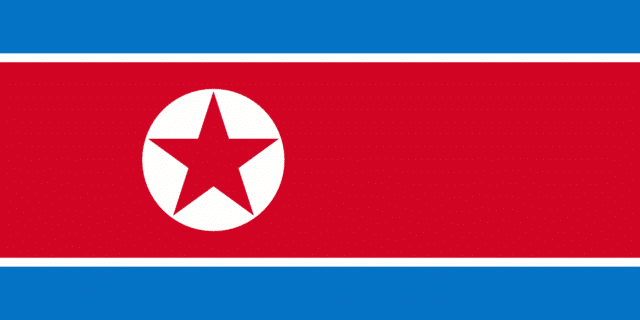
Characteristics Of North Korea
North Korean characteristics are also reflected in the design of the North Korea flag. Due to its insular mentality, North Korea is thought of as a closed box. Entry into the nation is limited to tourists. Without a local guide, tourists are not allowed. Pyongyang, the nation’s capital, is situated on the Taedong River. Korean is the official language of the country. The North Korean Won is the accepted form of currency.
Long and harsh winters are the norm in North Korea. The wind chills from Siberia force the temperature to plummet below -10 degrees. Summers are wet due to monsoon influences. Rice is the primary ingredient in Korean food. Usually, light lunches are prepared. The food most often consumed is prugoki. Additionally, seafood occupies a significant position.
Currently, Pyongyang Time is used in North Korea. It means that the time in North Korea is 8:30 hours earlier than Coordinated Universal Time (UTC).
With 99.8% Korean citizens, North Korea is one of the most ethnically homogeneous nations in the world. There have been relatively few foreigners permitted to enter the nation since the conclusion of World War II.
Urban regions are home to more than two-thirds of the nation’s population. Numerous religious customs have affected North Korean society. Confucian principles, which are derived from the works of the Chinese teacher and philosopher Confucius, have traditionally influenced Korean culture.
Over time, influences from Buddhism, shamanism, and Christianity all spread to North Korea. Today, religion has no place in North Korea’s public life. There are no government statistics available on religion. The way people behave is significantly influenced by the government. The majority of North Korean society is closed off to the outside world.
The content that individuals may read in newspapers, see on TV, and access online is likewise regulated by the government. Citizens are even required to wear haircuts that have been authorized by the government.
North Korea has a command economy, which means that the government controls all economic decisions, including those relating to labor and pricing. The majority of other nations have a market economy, which means that in order to make these decisions, the government collaborates with various groups and businesses.
The nation’s largest trading partner is by far China. Since the end of World War II, North Korea has transformed from an agrarian to an industrial nation, with mining and the creation of weapons being its two main industries.
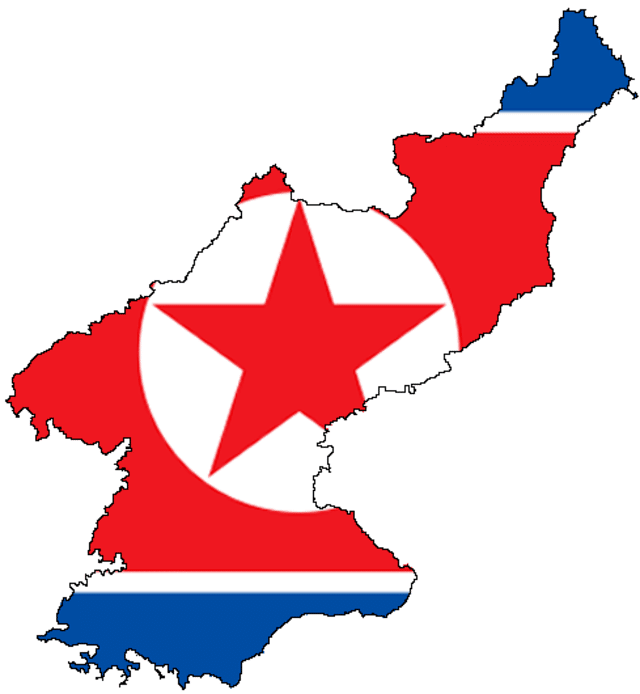
History Of North Korea Flag
First North Korea Flag
Korean King Gojong designated Bakhjun-hyo as an embassy in Japan in September 1882. Additionally, Bakhjun-hyo created the original North Korea flag. On September 25, the same year, the flag was flown. On March 6, 1883, though, acceptance became official.
King Gojong of the Joseon Dynasty was proclaimed emperor in 1897, marking the beginning of the Korean Empire. Korea had a number of Japanese invasions by 1910. Korea couldn’t raise its flag until 1948, even though Japan was vanquished at the end of World War II in 1945. The Korean Peninsula was split between the North and the South after the end of the war.
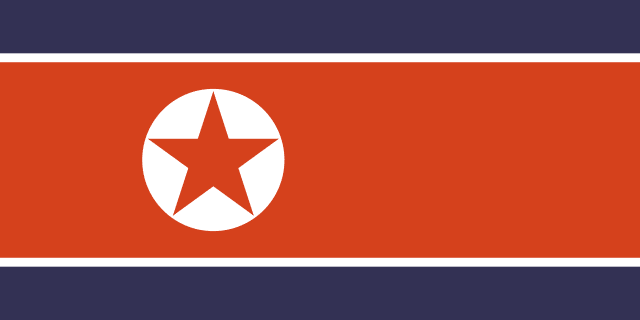
North Korea Flag Under the Soviet Union
Following the United Nations resolution, the US was granted control of the South, while the Soviet Union was given control of the North. Because of the start of the Cold War, they were unable to manage this joint guardianship procedure on both sides.
Korea was split into two separate states as a consequence. In the process, the Soviet Union announced its control over North Korea by flying the crimson Hammer and Sickle flag.
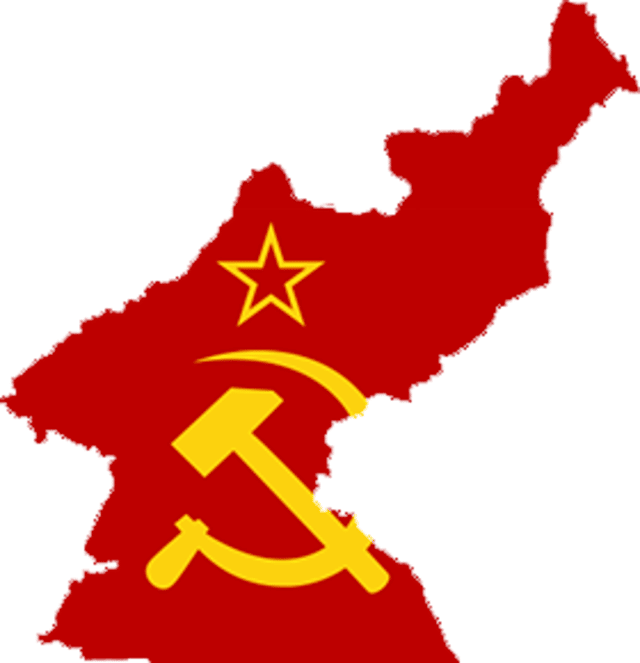
Division Of Korea
North Korea proclaimed its independence as a sovereign communist state in 1948. On September 8 of the same year, a new North Korea flag was raised. The top and bottom of the North Korea flag are blue, while the center is a wide red stripe. A thin white stripe is placed at the top and bottom in between the red and blue stripes.
Additionally, the red area has a white backdrop with a red star in the center. The red star on the flag represents communist philosophy, while the red band on the flag represents the spirit of revolution. On the flag, the blue stripes stand for authority, harmony, and friendship, while the white lines denote purity.
The Korean Peninsula experienced war in 1950 as a result of North Korea’s attack on South Korea. America and the United Nations both took action to defend South Korea. Following that, ally China continued to support North Korea. Up until a cease-fire agreement was struck, this conflict between the two sides persisted into 1953. Korea, however, never had peace.

Recognition By United Nations
During national festivities in North Korea, a flag is hoisted next to the national flag. The hammer and sickle and writing brush motifs on this flag, which was designed by North Korean leader Kim Il-Sung, stand for workers, peasants, and intellectuals. North Korea was accepted into the UN in 1991.
As a result, the North Korea flag started to change in global organizations. The country unilaterally announced its departure from the 1953 cease-fire agreement on May 26, 2009. The successor to Kim Il-Sung, who controlled North Korea from 1994 to 2011, is Kim Jong-un. North Korea under Kim Jong was firmly opposed to the rest of the world. Their nuclear work and divergent policies were the cause of this.
Symbolism of the North Korea Flag
Although the application of the Marxist-Leninist-natured philosophy of Juche has replaced communist authority as the state’s guiding ideology and references to communism have been systematically removed from the country’s constitution and legal documents, the North Korean flag’s prominent motif is a red star, which is a universal symbol of communism and socialism. The constitution is nevertheless seen as having a socialist bent. The flag’s significance and symbolism have never changed, despite the constitution’s many revisions.
On the contrary, the red star reflects revolutionary traditions, while the red panel represents the nationalism and tenacity of the Korean people. The white stripes stand for the nationalism and cultural cohesion of Korea. The determination to struggle for independence, peace, friendship, and global solidarity is symbolized by the blue stripes.
In a typical piece of North Korean official writing that appeared in Rodong Sinmun, Kim Il-sung assigned the components of the North Korea flag symbolism. According to him, the color red represents a people when they stand resolutely in favor of the Republic.
The color white represents the purity of a monoethnic homeland, which had a single bloodline, one nation, one language, and one culture. And blue represents our nation’s valiant appearance and the spirit of the North Korean people, who are battling for peace and growth around the globe.
Red, white, and blue are considered the national colors of North Korea and stand for, in that order, sovereignty, peace, and friendship. They also represent purity, strength, and dignity.
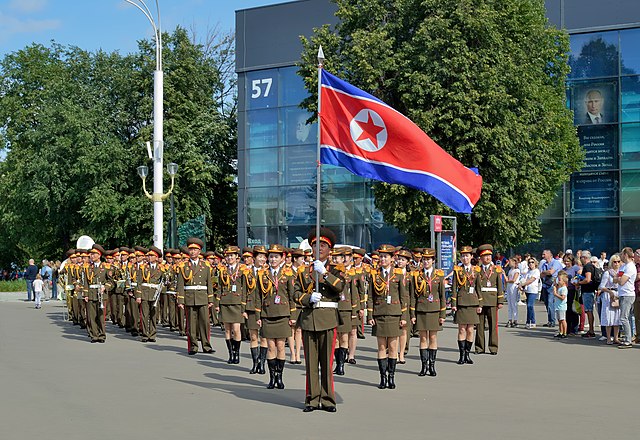
North Korea Flag Variations
Military Flags
The national symbol is used in place of the star in the Korean People’s Army Flag, which is a national North Korea flag with a gold fringe. The Korean People’s Army symbol is located in the center of the Ground Force flag. The Korean People’s Army insignia is in the center of a white flag with two thin blue stripes and a wide blue stripe.
On a field of sky blue with a broad black stripe in the lowest section and three thinner dark blue stripes above, the People’s Army insignia is shown in the center of the Air Force flag.

Workers’ Party of Korea
The North Korean government’s official flag is that of the Workers’ Party of Korea. It has a crimson background with a golden calligraphy brush, sickle, and hammer. The flag can be flown vertically as well.

Unification Flag
When North and South Korea are present at sports events together, an unofficial 2:3 flag known as the Unification Flag of North and South Korea is typically flown. It has a light blue map of Korea on a white backdrop.
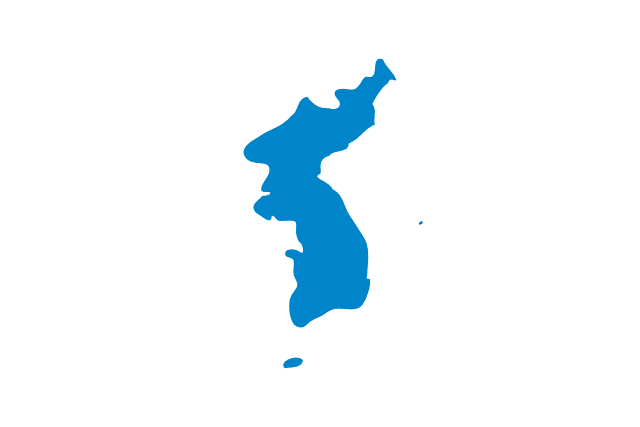
The Flag of the Sinuiju
Established in 2002, the Sinuiju Special Administrative Region’s flag consists of a field of turquoise with white blossoms in the middle.

Bottom Line
Above in this article, we explored the history and symbolism of the North Korea flag. In 1948, when the Democratic People’s Republic of Korea (DPRK) was declared, the nation was formally established. Due to its isolation from much of the rest of the world, North Korea is also known as the Hermit Kingdom.
North Korea is home to the third-tallest flagpole on the planet. The flagpole measures 520 feet in height. Article 170 of Chapter VII of the North Korean constitution provides the official definition of the national flag of the country.